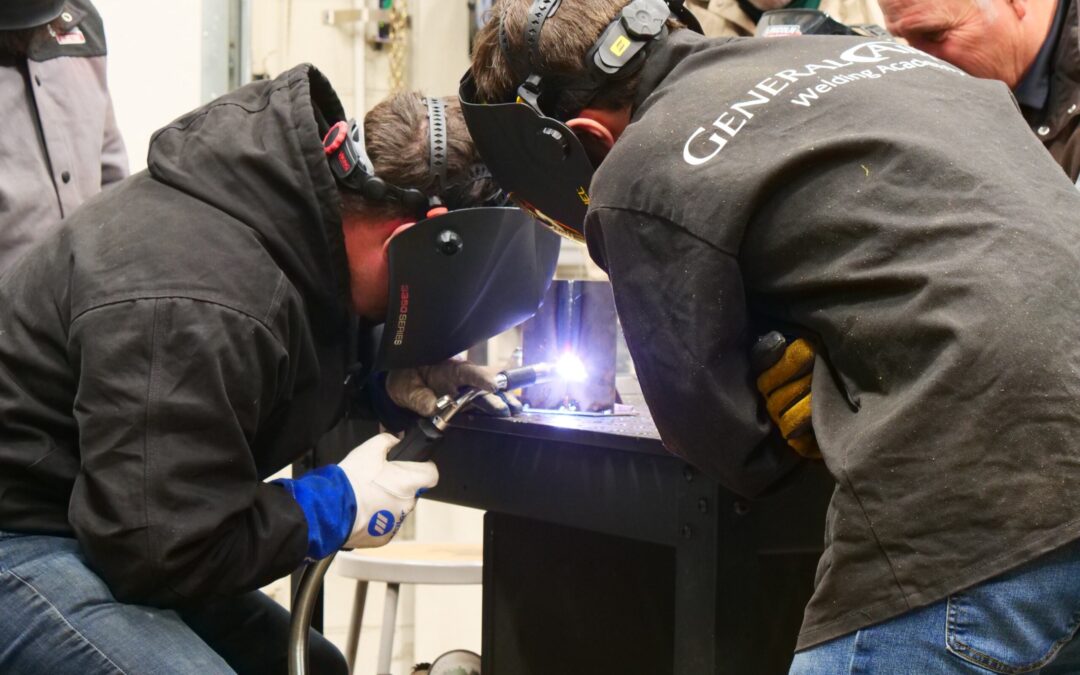HOBBYIST MIG WELDER BUYING GUIDLINES: INPUT VOLTAGE, AMPERAGE OUTPUT & WEIGHT
First and foremost, let’s define what a “hobbyist” welder, as in a machine, means. I define it as a machine that will not be used on structural applications. That is, 1) if the weld fails, nobody gets hurt and 2) it is not used for any type of code work, the one exception being sheet metal. Additionally, the machine is not used day in and day out at its maximum capacity as the machine’s duty cycle will likely be triggered, causing a temporary shutdown which, while harmless, can be quite annoying.
Now, getting into the red vs blue debate is a fool’s errand… so I’ll gladly bow out and profess that I am a huge fan of both Miller and Lincoln machines. If I’m buying a weekend warrior welder, the first question I’d ask myself is, “what the heaviest plate I’ll want to regularly weld?” Your answer will determine what your maximum amperage (amperage = penetration) will need to be. The “number” associated with ALL welding machines (eg. Millermatic 141) is reflecting some amperage at some duty cycle, but not necessarily the maximum amperage of the machine. So, before making a decision, look at the manufacturer’s machine spec sheet.
OUTPUT AMPERAGE
Amperage for a maximum plate thickness is open to interpretation but, from my point of view, it’s best to be conservative. My thoughts:
- 140-160A for 3/16” plate maximum thickness
- 180 – 200A for 5/16” plate maximum thickness
- 230 – 250A for 3/8” plate maximum thickness (heavier plate with preheat and/or beveling)
Machines >/= 250A are generally considered “light industrial” or “heavy industrial.” While some hobbyists will buy these more robust machines, it’s not common… so I won’t address them further.
INPUT VOLTAGE
Machines that fall in the “A” category above will run on ubiquitous 120V input whilst machines in category “C” will run on less common 208 – 230V input. Machines in category “B” will run on 120V, 208-240V, or both. The latter dual voltage machines are attractive for their voltage flexibility, but be aware that the dual machine plugged into 120V will be derated (again, read the manufacturer spec sheet).
Now, what if you want to weld 3/8” plate but don’t have the budget and/or the input voltage for a bigger machine? Will a smaller 120V machine work? For non-structural applications, the answer is “probably” if you are willing to accept the tradeoffs of:
- Poor (cold & convex) weld appearance (assuming no preheat)
- Preheating the plate (regardless of alloy) to increase penetration/weld appearance
- Not minding the wait of letting the machine cool off if its duty cycle is exceeded
WEIGHT
Hobbyist welders often like portability to bring their welder to the application or to help a welder-less neighbor on a project. The most important thing to remember here is that “inverter” designed machines weigh 30 – 45% less than the older style “transformer-rectifier” machines. Shop General Air Service & Supply today!


Recent Comments